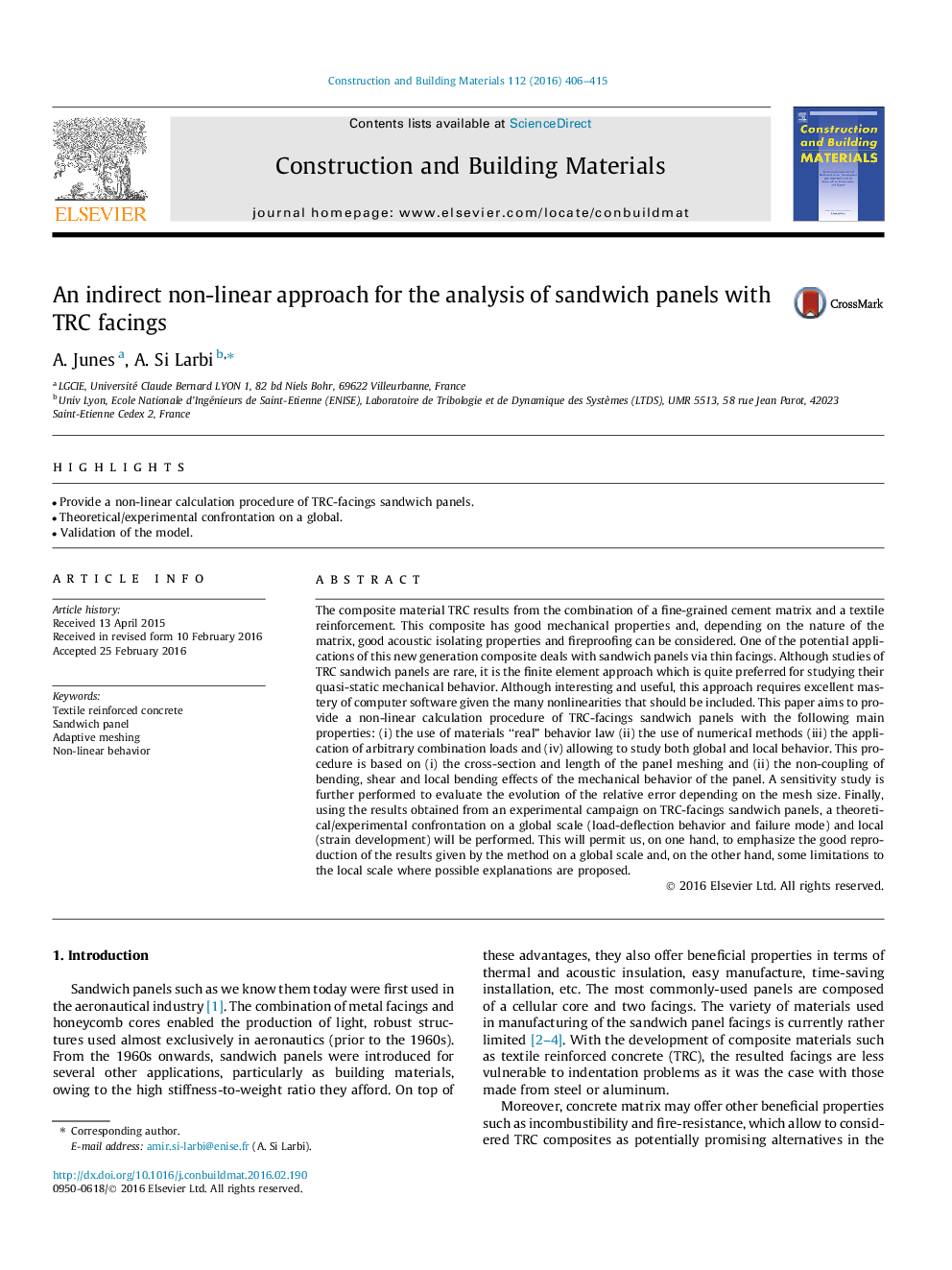| Article ID | Journal | Published Year | Pages | File Type |
|---|---|---|---|---|
| 6719154 | Construction and Building Materials | 2016 | 10 Pages |
Abstract
The composite material TRC results from the combination of a fine-grained cement matrix and a textile reinforcement. This composite has good mechanical properties and, depending on the nature of the matrix, good acoustic isolating properties and fireproofing can be considered. One of the potential applications of this new generation composite deals with sandwich panels via thin facings. Although studies of TRC sandwich panels are rare, it is the finite element approach which is quite preferred for studying their quasi-static mechanical behavior. Although interesting and useful, this approach requires excellent mastery of computer software given the many nonlinearities that should be included. This paper aims to provide a non-linear calculation procedure of TRC-facings sandwich panels with the following main properties: (i) the use of materials “real” behavior law (ii) the use of numerical methods (iii) the application of arbitrary combination loads and (iv) allowing to study both global and local behavior. This procedure is based on (i) the cross-section and length of the panel meshing and (ii) the non-coupling of bending, shear and local bending effects of the mechanical behavior of the panel. A sensitivity study is further performed to evaluate the evolution of the relative error depending on the mesh size. Finally, using the results obtained from an experimental campaign on TRC-facings sandwich panels, a theoretical/experimental confrontation on a global scale (load-deflection behavior and failure mode) and local (strain development) will be performed. This will permit us, on one hand, to emphasize the good reproduction of the results given by the method on a global scale and, on the other hand, some limitations to the local scale where possible explanations are proposed.
Related Topics
Physical Sciences and Engineering
Engineering
Civil and Structural Engineering
Authors
A. Junes, A. Si Larbi,
